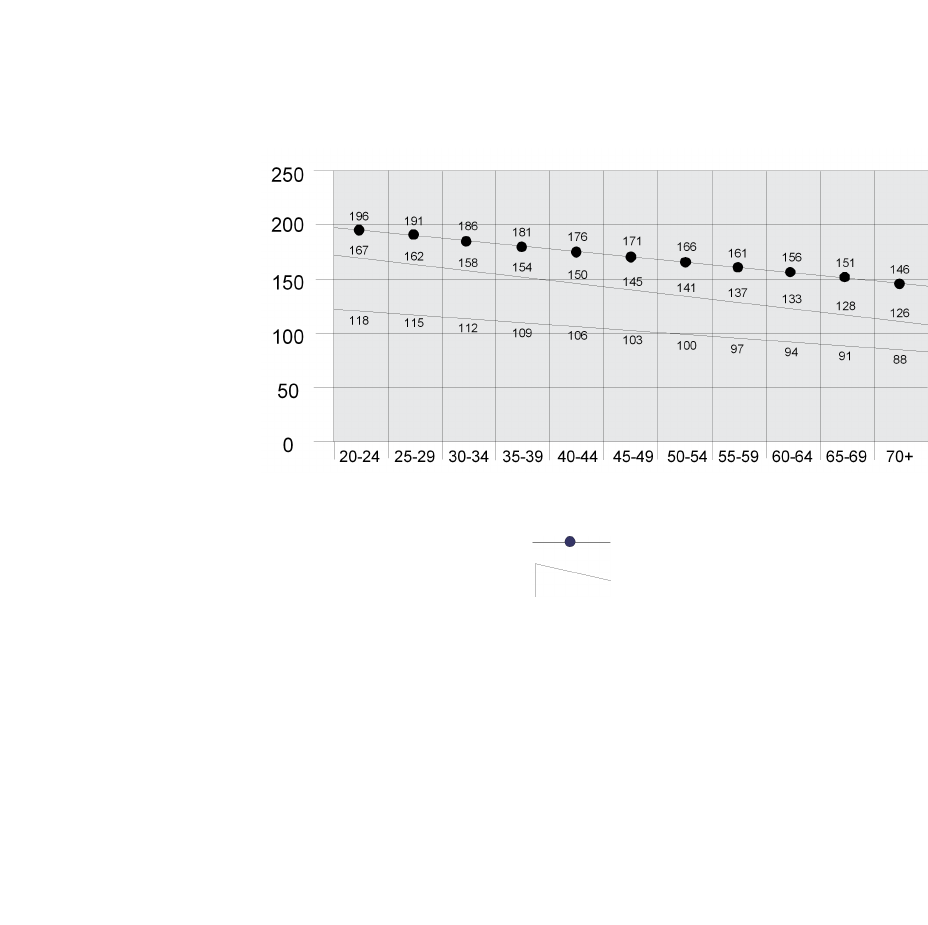
Heart Rate Calculations
Your maximum heart rate usually decreases from 220 Beats Per Minute (BPM) in childhood to approximately 160 BPM by age 60.
This fall in heart rate is usually linear, decreasing by approximately one BPM for each year. There is no indication that training
influences the decrease in maximum heart rate. Individuals of the same age could have different maximum heart rates. It is more
accurate to find this value by getting a stress test than by using an age related formula.
Your at rest heart rate is influenced by endurance training. The typical adult has an at rest heart rate of approximately 72 BPM,
where as highly trained runners may have readings of 40 BPM or lower.
The Heart Rate table is an estimate of what Heart Rate Zone (HRZ) is effective to burn fat and better your cardiovascular system.
Physical conditions vary, therefore your individual HRZ could be several beats higher or lower than what is shown.
The most efficient procedure to burn fat during exercise is to start at a slow pace and gradually increase your intensity until your
heart rate reaches between 60 – 85% of your maximum heart rate. Continue at that pace, keeping your heart rate in that target zone
for over 20 minutes. The longer you maintain your target heart rate, the more fat your body will burn.
The graph is a brief guideline, describing the generally suggested target heart rates based on age. As noted above, your optimal
target rate may be higher or lower. Consult your physician for your individual target heart rate zone.
Note:
As with all exercises and fitness regimens, always use your best judgment when you increase your
exercise time or intensity.
Fat Burning Target Heart Rate
Heart Rate
BPM (beats
per minute)
Age
Maximum Heart Rate
Target Heart Rate Zone (keep
within this range for optimum fat
burning)
1010
10
